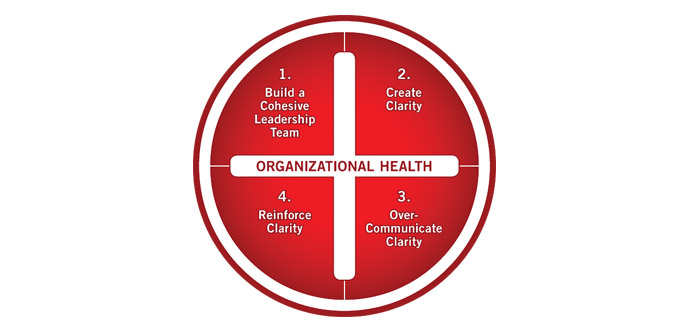Imagine working for an organization where your Leadership Team is strong, cohesive, passionate and focused. Where every participant from top to bottom is aware of the corporate vision and precisely where they fit into that vision.
Communication is abundant, positive and clear with coworkers and customers alike. Each individual leaves at the end of the day feeling great about themselves, their accomplishments and their organization. This, in part, is organizational health.
“The single greatest advantage any company can achieve is organizational health. Yet it is ignored by most leaders even though it is simple, free and available to everyone who wants it.” Patrick Lencioni, The Advantage.
According to Lencioni, “The advantage of organizational health is undeniable and massive. Companies get more done in less time. They avoid losing their best people. They identify problems earlier and solve them faster. They beat rivals who waste time, money and energy fighting among themselves, which ultimately drives away good employees and customers.”
My leadership and executive coaching practice in Bend, Oregon
and beyond often revolves around correcting the lack of health in
their organization.
Compare the health of an organization to the health of a family. There are healthy families where the needs of each individual are recognized, honored and met. Each member is given the necessary attention, tools and support to thrive. Then there are dysfunctional families where everyone is on their own to find their way. Chaos, turbulence and general unhappiness ensue.
Organizational health trumps all. Ask yourself six’ important questions when considering the health of the entity that you lead.
Why do we exist? How do we behave? What do we do? How will
we succeed?
What is most important — right now? Who must do what?
Based on answers to these six questions, Lencioni provides his concept of organizational health through ‘4’ disciplines, which I want to share with you:
1. Build a Cohesive Leadership Team — The leaders of the organization must behave in a functional, cohesive way. If they behave in dysfunctional ways, then that dysfunction will cascade into the rest of the organization and prevent organizational health.
2. Create Clarity — Leaders must eliminate any gaps that may exist between them, so that people one, two or three levels below have complete clarity about what they should do to make the organization successful.
3. Over-Communicate Clarity — Over-communicate the answers to the six questions. This quality alone sets leaders of healthy organizations apart from others.
4. Reinforce Clarity — Leaders must ensure that the answers to the six critical questions are reinforced in every process that involves people, from hiring and firing to performance management and decision-making and is designed in a custom way to intentionally support and emphasize the uniqueness of the organization.
I challenge you to pose these six questions to the leaders in your
organization today. Then, ask the same questions to those in lower positions. Where are there gaps?
Then, employ Lencioni’s four disciplines. While I’m not saying that it will be easy, your ROI will be well worth your effort.
Master Executive and Leadership Coach Ann Golden Eglé, MCC, has steered highly-successful individuals to greater results since 1998. President of Golden Visions & Associates, LLC, Ann can be reached at 541-385-8887 or subscribe to her newsletter at www.GVAsuccess.com






1 Comment
Thanks, Ann, for highlighting Pat’s great work in The Advantage. We use it often with clients as well, and find that the simple but no easy approach to turning attention on to organizational health. It is enigmatic to many leaders, ephemeral, in fact, but essential to great results and to being a great workplace fit for human life.
I always appreciate your comments and thoughts in CBN. Thanks!